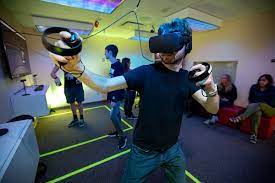War, when properly managed, is undeniably good for the leaders of this country. They use it to get cheaper materials, to make money, and to push their own agendas. Since war is so profitable, American leaders have no interest in stopping the perpetual war machine of America.
While constitutionally politicians are not allowed to silence the press, mainstream media has been proven to be in the pockets of Washington D.C. I've already discussed the profitability of war, so it isn't hard to see why politicians have no interest in American citizens hearing anti-war reporting.
For example, the United States government has consistently expressed ongoing support for Ukraine in the Russo-Ukrainian war. The Biden administration has provided over 75 billion dollars in financial and logistical aid to Ukraine. The majority of American taxpayers have supported these financial aids, but how do you think popular opinion would sway if the following article was more reported upon?
US Officials See Ukraine as an Active and Bountiful Military Research Opportunity
Since the dawn of anti-war protesting, protesters have been silenced by the government. War is how nations progress, and governmental bodies don't want citizens to stand in the way. In American history, I believe the strongest outcry against war was during Vietnam. American citizens were outraged at the Vietnam War and demanded our men return home. Thousands of people showed up in DC to protest, and over time it worked. Of course, large-scale activism like this rarely exists today, with everyone instead opting to sign an online petition or buy a bumper sticker. I believe a huge reason Americans don't oppose American wars to a greater extent is the effort it takes to protest. Additionally, I don't think the American people are informed about the ongoing wars that America is in. In several cases, I have met people who believe the United States isn't at war at all, and that just goes to show how well the government and major news outlets are doing to hide the truth of American war and violence.








